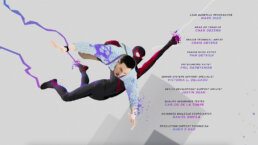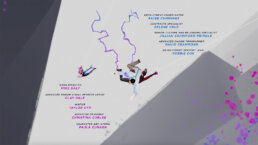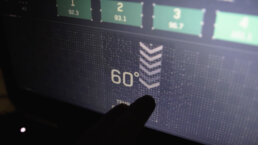Title sequences are a gateway to cinematic storytelling, offering the audience new layers of the film to digest. Beyond serving as a curtain-call to the creators and cast of the film, title sequences are an exciting and creative way to add additional details to the film’s story, poke fun with Easter eggs and display astounding visuals. But these title sequences aren’t just limited to film. Complex and cinematic title sequences are captivating gamers now in the video game industry.
Here at Perception, we have worked on title sequences for various forms of entertainment. We have crafted episodic title sequences for shows like WandaVision, Loki and Moon Knight, and powerful title sequences for films like Black Panther: Wakanda Forever, Lightyear and Avengers: Endgame. Now, we’re also crafting title sequences for video games. While the purpose of these title sequences are nearly identical, the ways we approach these title sequences are quite different.
The most drastic difference that leads to the creative variations in designing for film and video games is the length of the production. The length of these projects ultimately leads to three core differences between our approaches.
The films we work on have an average runtime of 2-3 hours. Even in its earliest stages, our team can sit down and view the entire film, forming a solid comprehension of the plot, the motivations and the arcs that the characters go through. We can see early storyboards, rough cuts and updated footage to craft our story. We’ll collaborate with the film’s production and creative teams to zero in on regions of interest and moments that can weave themselves into new visual opportunities through the title sequence.

Meanwhile, a video game can have an average play time of over 50 hours. At the stage we enter the project, the game isn’t finished so playing through it isn’t an option. Even if we want to play the video game early (and we really do!), it would be difficult to play every storyline, side quest and mission in such a long project. It’s for that reason that we piece together the arcs of the video game with the creators. While working on Marvel’s Spider-Man 2 for the PlayStation 5, we partnered closely with the art directors and creative directors to view hero clips, storyboards and major plot points of the video game. We learned about this world through constant discussion and interaction.
Just like we can’t play a video game in entirety during the production phase, it’s possible that even players won’t complete a video game prior to the title sequence rolling. With so many side quests and hidden storylines in video games, we want to keep our video game title sequences aligned as closely as possible with the main storyline or the arcs of the main characters. Gamers then won’t be spoiled for any future side quests they wish to complete and can still feel the sense of fulfillment the title sequence brings.

However, when audiences watch a film, they have seen the entire plot, met each character and had the same viewing experience as other audience members. Therefore, we can reference different portions of the film, side characters and Easter eggs to add even more nuance to the sequence, celebrating every portion of the film from start to finish.
The varying lengths of these projects leads to the final difference: the length of the sequence itself. Films will typically credit roughly 30 names, resulting in a shorter sequence of around 2 ½ minutes where individual names have dedicated frames. Each name can spend more time independently on the screen with their frames personalized or dedicated to their character or personality.
In a video game, however, we’re crediting hundreds of names. With over 800 names being credited in Marvel’s Spider-Man 2, we had to figure out how to craft a sequence that could properly credit each person that worked on the game while also keeping gamers engaged throughout the 5 ½ minute sequence. We used vignettes for this, manipulating the camera to show 3-stage stories to minimize the amount of different frames while also keeping gamers interested in what comes next in that particular vignette.
Despite all of these differences, ultimately, the spirit of each title sequence is the same: celebrate the hardworking teams that helped bring these productions to life. Whether the title sequence is a somber tone or an exciting tone, 2 minutes or 5 minutes, 30 names or 800 names, we always create title sequences with a focus on making sure each name is credited and honored as a crucial member of their team.
Title sequences are one of our favorite things to design here at Perception. Whether we’re approaching these title sequences with techniques for film or techniques for video games, we’re always excited to bring new layers of these detailed plots, thrilling quests and bold characters to life.
Experience Perception
Perception is an Emmy nominated design lab pioneering the visionary process of Science Fiction Thinking to architect the future. We divide our time equally between the parallel worlds of science-fiction—working with trailblazing filmmakers, and science-fact—collaborating with the world’s most innovative technology brands.









